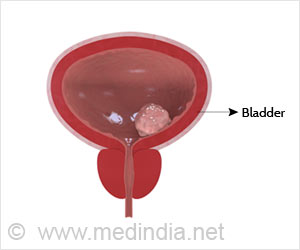Breast cancers that are hormone receptor-positive roam through the blood and hunt for a molecule E-selectin to enter spongy tissue inside the bones.

‘GMI-1271 inhibits specific blood vessels in bone marrow that carries breast cancer cells from entering the bone marrow.’





In an article published online in Science Translational Medicine, the researchers describe how cells from breast cancers that are hormone receptor-positive roam through the blood and tissues of mice. They're hunting for specific blood vessels in bone marrow that contain the molecule E-selectin. With a key -- molecules on their surface that bind to E-selectin -- the cancer cells enter the spongy tissue inside bones, often lying dormant for years. Hormone receptor-positive breast cancers are the most common type of breast cancer, according to the American Society of Clinical Oncology, and grow by exploiting the body's estrogen or progesterone.
In human patients, these dormant cells can resurge later and create metastatic cancer relapse, for which there is no cure, said Sipkins, who is the paper's senior author. Biopsies of bone marrow in human breast cancer patients have shown that even at very early stages of the cancer, roaming cancer cells, or micrometastases, are making their way out of the breast and into the bone marrow, Sipkins said.
"Now we know how they are getting in," she said. "We also identified an important mechanism that allows them to remain anchored in the bone marrow. In the mouse, our findings could offer new strategies to intervene at the molecular level before dormant cells can take hold and cause relapse."
One strategy is finding a way to inhibit E-selectin, which could limit the cancer's ability to travel into the bone and resurge as metastatic cancer, she said. The scientists used an E-selectin inhibitor called GMI-1271, which is currently in human clinical trials. They found the compound successfully prevented the breast cancer cells from entering the bone marrow in mice.
Advertisement
The drug was able to force dormant breast cancer cells out of the bone tissue into the bloodstream. The researchers hypothesize that flushing these dormant cancer cells back into the bloodstream might give the immune system, chemotherapy or hormonal therapy another opportunity at killing them off, Sipkins said. She and colleagues hope to investigate that approach further.
Advertisement
Source-Newswise















